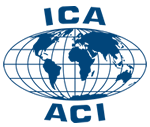International Land Use Symposium (ILUS) 2015
Trends in Spatial Analysis and Modelling of Settlements and Infrastructure
On behalf of the local organizing committee it is our great pleasure to invite you to the International Land Use Symposium on “Recent Trends in Spatial Analysis and Modelling of Settlements and Infrastructure”, to be held November 11-13 2015, in Dresden, capital of the German federal state of Saxony. The International Symposium brings together leading academics and interested attendees for presentation, discussion, and collaborative networking in the fields of spatial sciences, environmental studies, geography, cartography, GIScience, urban planning, architecture, which relate to investigations of settlements and infrastructure. In particular, the interdisciplinary meeting will examine new ideas in overlapping fields of studies with the goal of advancing our understanding of built-up areas, and how recent developments in spatial analysis and modeling can lead to sustainable resource management, better support of planning and regional development, enhanced spatial information and knowledge, and optimized strategies, instruments and tools.
Topics
- Towards a better Understanding of Settlements and Infrastructure
The aim of understanding settlements and infrastructures brings about many questions: What are the most relevant challenges and research questions in this topic over the coming years? What data and analysis strategies do we need? What are the strengths and weaknesses of the current frameworks and methods? In what way is theory development supported by the quantitative exploration of spatial and process-related interrelations, structures and patterns?
- Geographic Data Mining and Knowledge Discovery
Powerful algorithms for structural analysis and the visualization of large volumes of geo-data are in scope of this topic. Directions are as follows: Multidimensional Analysis and Visualization, Self-Organizing Maps (SOM), Segmentation, Clustering and Classification, Spatial Regression, Spatial Association Rules, Machine Learning (ML) etc. The nontrivial process of the identification of understandable, valid, possibly novel and useful patterns in multidimensional data of settlements and infrastructure is to be discussed.
- Spatial Modelling, System Dynamics and Geosimulation
A number of research efforts have focused on presenting solutions for modelling and simulation of dynamic processes. Automata-based modeling should be discussed in theory and/or applications with primary focus on settlements and infrastructure: Cellular Automata (CA), Multi-Agent Systems (MAS), System Dynamics (SD), Evolutionary Algorithms, Modelling Dynamic Spatial Processes etc.
- Multi-Scale Representation and Analysis
It is necessary to scale processes spatially and temporally in order to adequately understand phenomena in the context of settlement and infrastructure. Aggregation and disaggregation procedures, also known as up-scaling or down-scaling, are discussed for switching between various scales of spatial representation. Related to this is the “modifiable areal unit problem” (MAUP), omnipresent when working with spatial phenomena. Further directions are as follows: Generalization, Multiple Representation, Conflation, Modeling Object Relations, Multi-Granularity, Geovisualization and Mapping etc.





